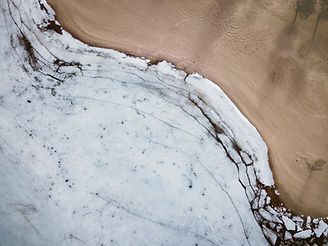Cycling levels
To indicate the level of a bike ride, we use a number from 1 to 8.
These figures give an indication of what you can expect if you ride a trekking bike and use your gears properly.
If you opt for an E-bike, then it all gets a lot easier. A trip with a number of 4 then changes to 2 or 3, depending on how much force you put in yourself.
An e-bike is not a motorcycle; you will have to keep pedaling yourself to get support. But aIf you shift gears in time (as you would with a car), you'll be whistling uphill almost everywhere and the more difficult routes will also come within your reach. And they often go through the most beautiful areas; the mountains!
The length of the stages, the number of altimeters (climbing and descending) and the difficulty of the terrain determine the figure.
On some days you can choose to shorten a stage, for example to avoid a climb. That changes the heaviness of that particular day.
And perhaps your own bicycle at home is slightly different from the bicycles we rent out. It's all little factors that make it easier or harder.
Do you have doubts about the cycling level?
Feel free to contact us for personal advice.
If during the holidays it turns out that the level is disappointing, we can usually still do aoffer a solution.
By adjusting your route,still vowhether to arrange an e-bike or skip a route,for example if you your one day not feeling well.Then arrange wetransport to the next hotel and you can start fresh the next day. This way your trip really remains a holiday!
We did not include the weather in the assessment.
A day with a headwind or high temperatures can make a route more difficult than you initially thought.
1
Very easy
-
The lightest cycling holiday; over mostly flat terrain. Short steep slopes with height differences of up to ± 100 meters can occur, such as hills or the driveway of a high bridge.
-
Day distance: 35 - 50 km on average per day
-
Altimeters (climbing and descending): on average 0 to 100 per day
2
Not too difficult
-
Not too steep and not too long slopes over not very difficult terrain. The daily distances are sometimes a bit longer, up to about 60 km per day
-
Day distance: 40-60 km on average per day
-
Altimeters (climbing and descending): average 100 - 500 per day
3
Keep on moving! but enjoy it
-
Occasionally longer and steeper slopes without dominating. Short stages may include more climbing.
-
Day distance: 45 - 75 km on average per day
-
Elevation (ascent and descent): average 500 - 800 per day
4
Sporty
-
Cycling in spicy hills or mountains over longer distances. Day distances vary from 70 to 100 km. Good physical condition and some stamina are required. Most people opt for a road bike or gravel bike.
-
Day distance: 60 - 95 km on average per day
-
Elevation (ascent and descent): average 1000 - 1500 per day
5
Challenging
-
For cyclists with a sporty character. You cycle in mountains where the slopes are steeper and longer and require more power. Suitable for anyone who regularly cycles longer distances and is used to hills and mountains.
-
Day distance: 50 - 85 km on average per day
-
Elevation (ascent and descent): average 800-1200 per day
6
For the experienced racing cyclist
-
For the experienced racing cyclist who is familiar with medium and high mountains.
-
Day distance: 90-110 km on average per day
-
Elevation (ascent and descent): average 1500 - 2000 per day
7
Semi-Pros
-
Medium and high mountains with several cols per day. Average daily distances of 100 km, for anyone who would like to ride the Vuelta...
-
Day distance: 100 - 140 km on average per day
-
Elevation (ascent and descent): average 1700 - 3500 per day
8
For aspiring red jersey wearers
-
For toppers that no mountain is too high.
-
Day distance: 100-160 km on average per day
-
Elevation (ascent and descent): average 2500 - 4500 per day

Get in Touch
This is a Paragraph. Click on "Edit Text" or double click on the text box to start editing the content.
